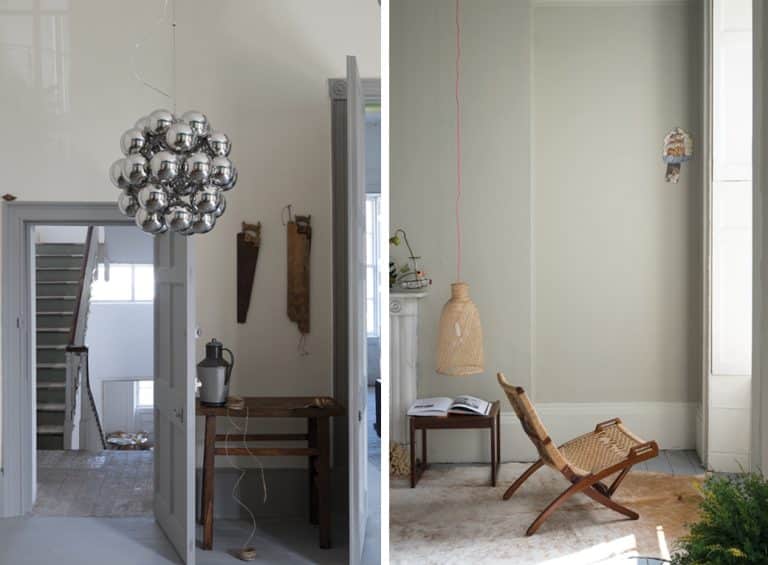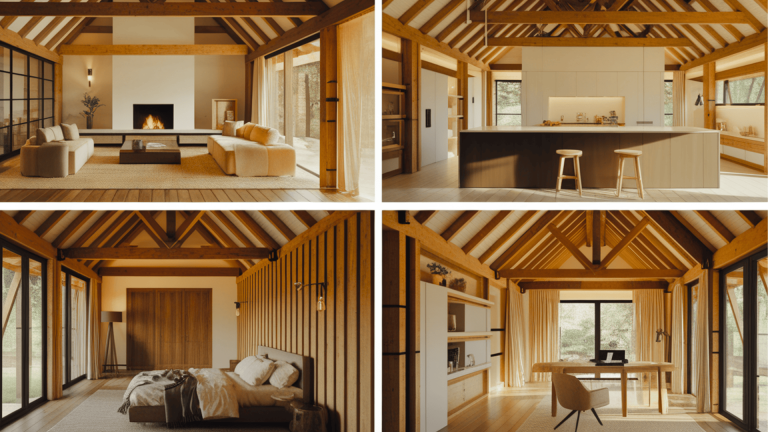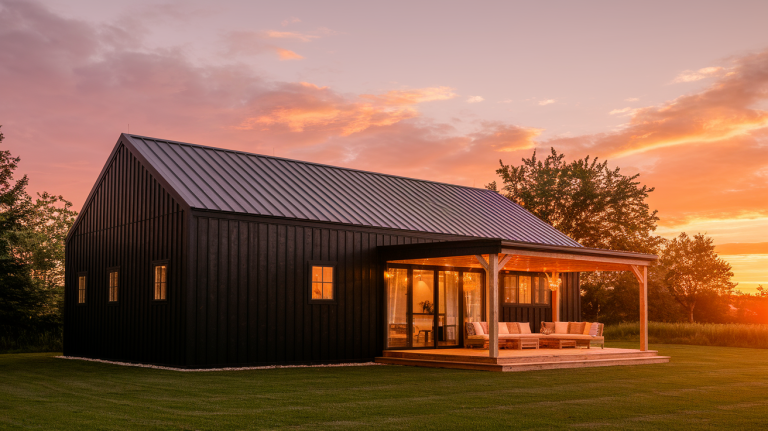Japandi Color Palette: Neutrals, Accents & Paint Picks
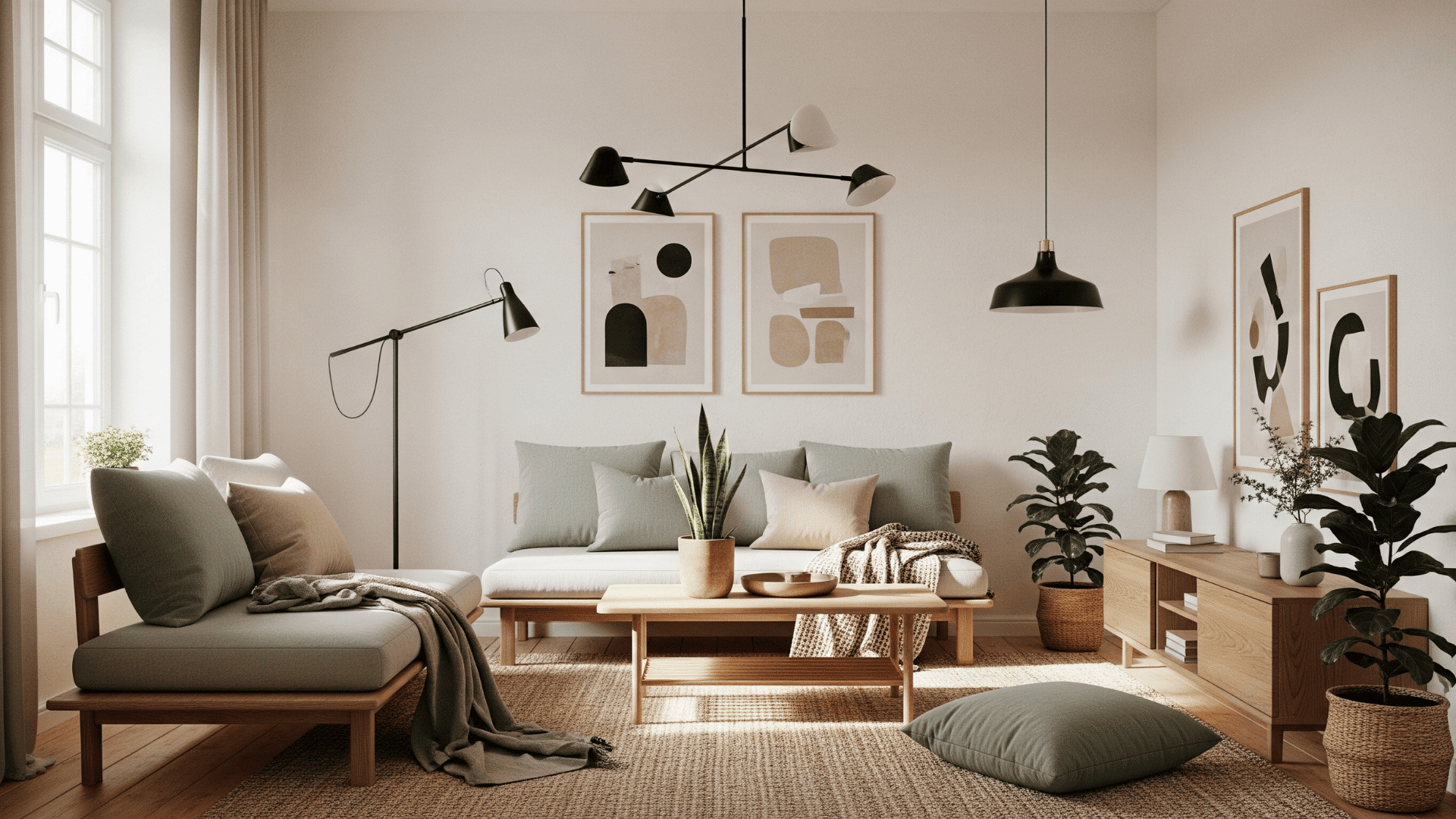
Japandi color palettes bring together the calm of Japan and the brightness of Scandinavia. This style feels simple yet inviting.
With muted tones, soft textures, and natural contrasts, it creates balance without clutter. Instead of bold shades, Japandi uses earthy neutrals and warm woods to set a peaceful mood.
The mix is modern but deeply rooted in tradition. It feels both fresh and timeless, making your home restful yet stylish.
In this blog, we’ll explore how Japandi colors work, why they matter, and how they can transform any space into a calm sanctuary.
Core Colors (Your Everyday Neutrals)
Japandi interiors thrive on calm, timeless neutrals that feel both warm and grounded.
Think soft whites, gentle beige, subtle greige, and quiet gray, balanced with natural wood tones. These colors create harmony, making rooms restful yet inviting.
Warm whites open up space, beige and greige soften edges, while gray adds quiet depth. Adding oak or walnut wood ensures warmth and balance.
Together, these neutrals set the serene foundation for Japandi style.
| COLOR | HEX CODE |
|---|---|
| Warm White | #F6F3EE |
| Beige | #D8CFC3 |
| Greige | #CFC9BD |
| Light Gray | #D9DAD7 |
| Oak Wood | #C9A57E |
Accent Colors (Depth Without Clutter)
Japandi style keeps accents minimal, but they make every detail count.
A small touch of black, seen in frames, lamps, or slim furniture lines, adds depth without overpowering. Nature-inspired hues like sage, olive, and terracotta bring quiet warmth and a grounded feel.
Used sparingly, inky blues add calm richness without clutter. These accents highlight texture, contrast, and balance, while keeping the palette soothing.
Together, they give Japandi spaces a subtle character while maintaining the clean, uncluttered mood.
| COLOR | HEX CODE |
|---|---|
| Charcoal | #333333 |
| Sage | #9CA49A |
| Olive | #6F7B64 |
| Terracotta | #C57A63 |
| Inky Blue | #24303A |
Simple Rules for Building a Japandi Scheme
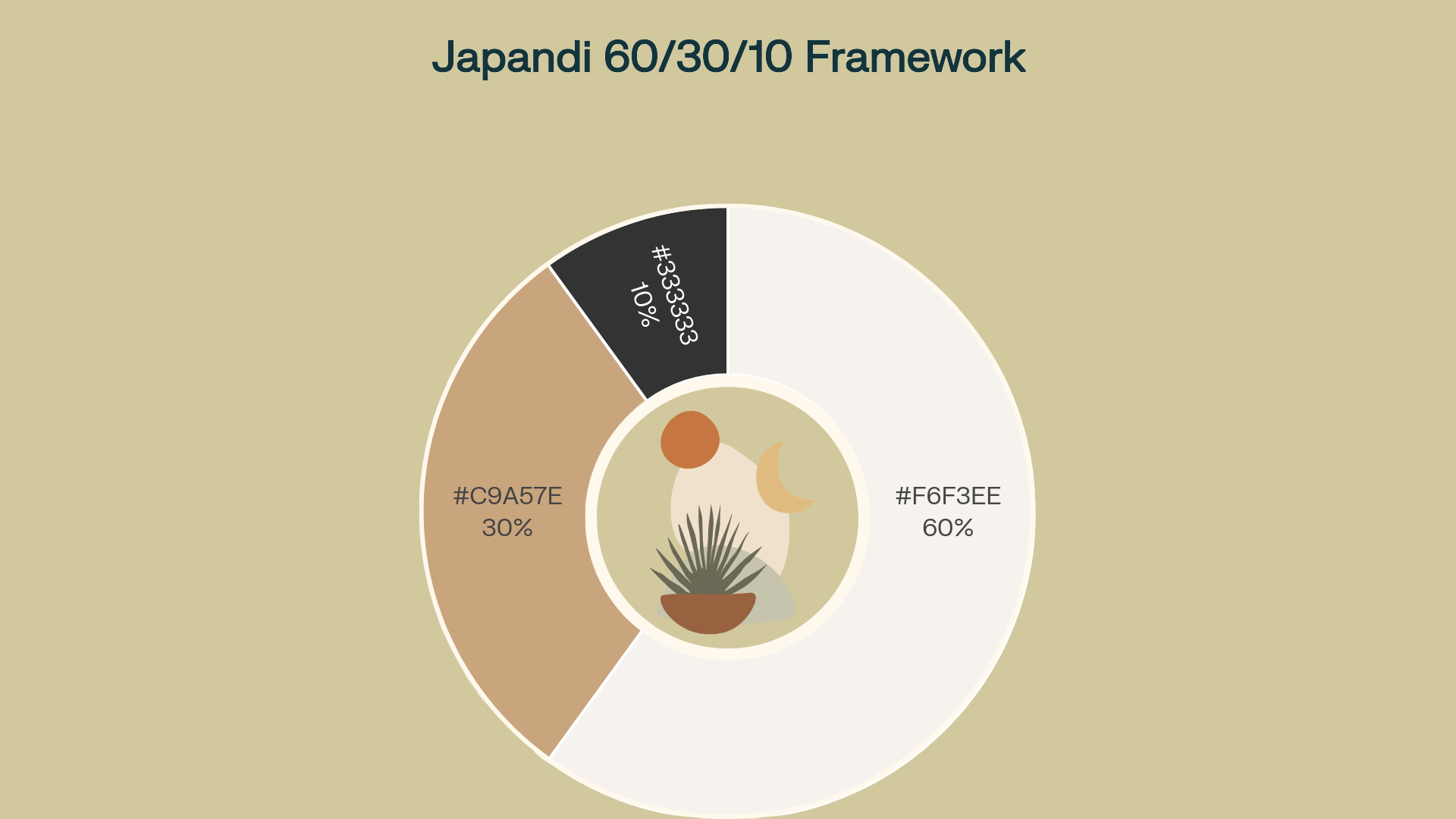
When creating a Japandi palette, less is more. Focus on balance, contrast, and texture to keep your space calm and purposeful.
- Follow 60/30/10: 60% light neutrals, 30% wood/textiles, 10% black or earthy accents.
- Use Contrast Wisely: Pair soft neutrals with one dark, grounding element like black metal or espresso wood.
- Tighten the Palette: Fewer colors, more texture; think linen, clay, and stone.
- Let Each Piece Breathe: Avoid clutter; every item should serve form and function.
- Draw from Nature: Choose tones and finishes inspired by wood, earth, and stone.
By sticking to these simple rules, your Japandi scheme will feel balanced, natural, and timeless.
Room-by-Room Palettes (With Paint Ideas)
Japandi colors work differently in each room, creating calm and flow throughout your home. Using the right balance of tones and textures can enhance mood and function.
1. Living Room

Start with warm white walls to create a fresh and calming atmosphere.
Incorporate oak wood furniture pieces to add natural warmth and texture. Use black metal accents in lighting fixtures, picture frames, and thin furniture legs to introduce subtle contrast that grounds the space.
To soften the overall look, bring in textiles in a muted sage green: think cushions, throws, or rugs.
- Paint Brands to Try:Benjamin Moore’s “Simply White” or Farrow & Ball’s “White Tie” for warm white walls
- Collections to Consider:Dulux’s “Natural Calmer” range offers soft, warm neutrals perfect for Japandi spaces
2. Kitchen
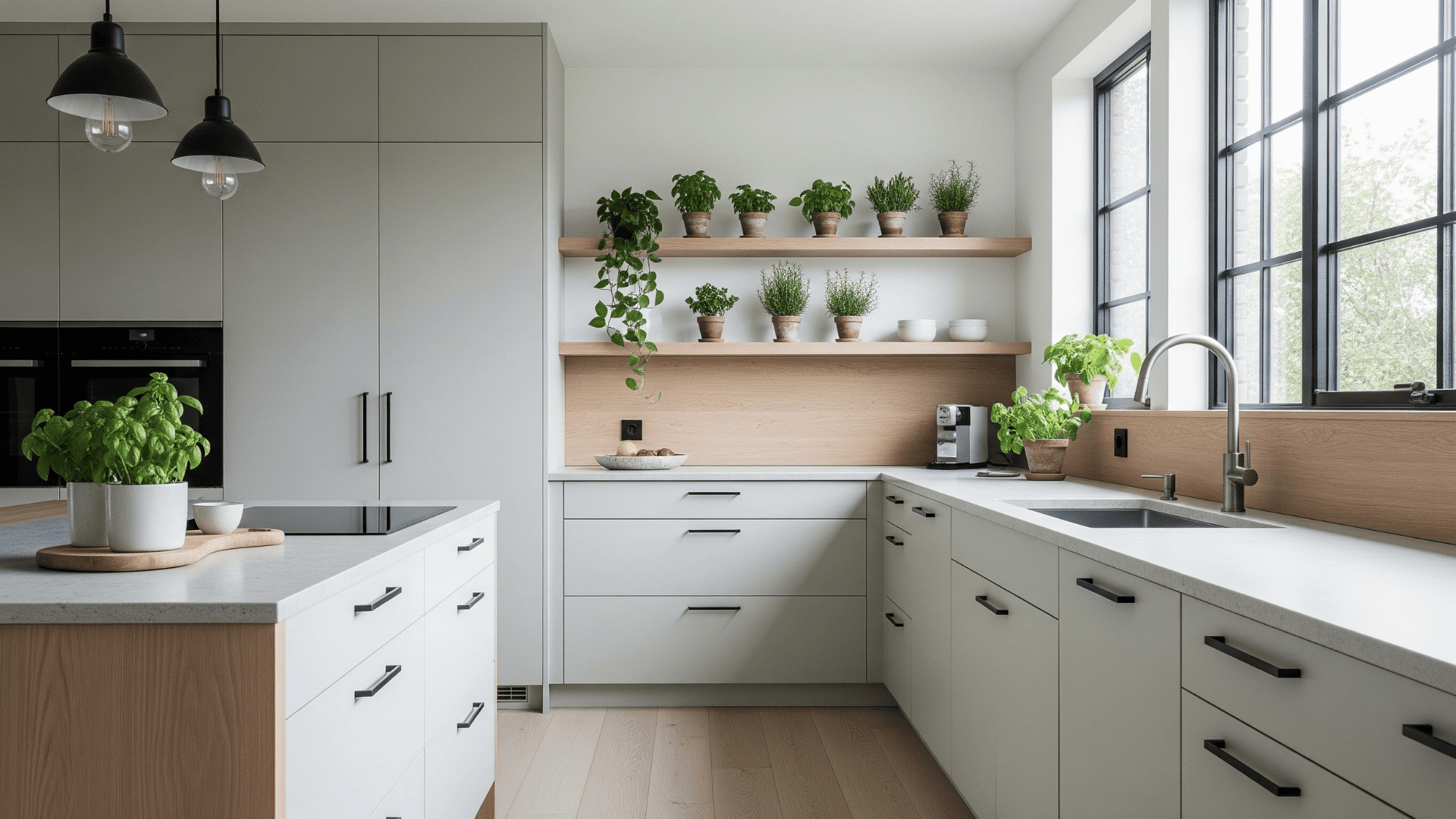
For the kitchen, choose off-white or pale greige tones for cabinets and walls to maintain a bright, neutral backdrop that feels clean and spacious.
Complement these light hues with charcoal-colored hardware such as drawer pulls or faucets, which add a modern, understated depth to the space.
Introduce greenery through potted plants or herbs to bring life and freshness indoors, amplifying the connection to nature that is key in the Japandi style.
- Paint Brands to Try:Sherwin-Williams’ “Alabaster” for warm off-white, or Benjamin Moore’s “Revere Pewter” greige
- Collections to Consider:Farrow & Ball’s “Modern Emulsion” for kitchen-friendly, durable finishes
3. Bedroom
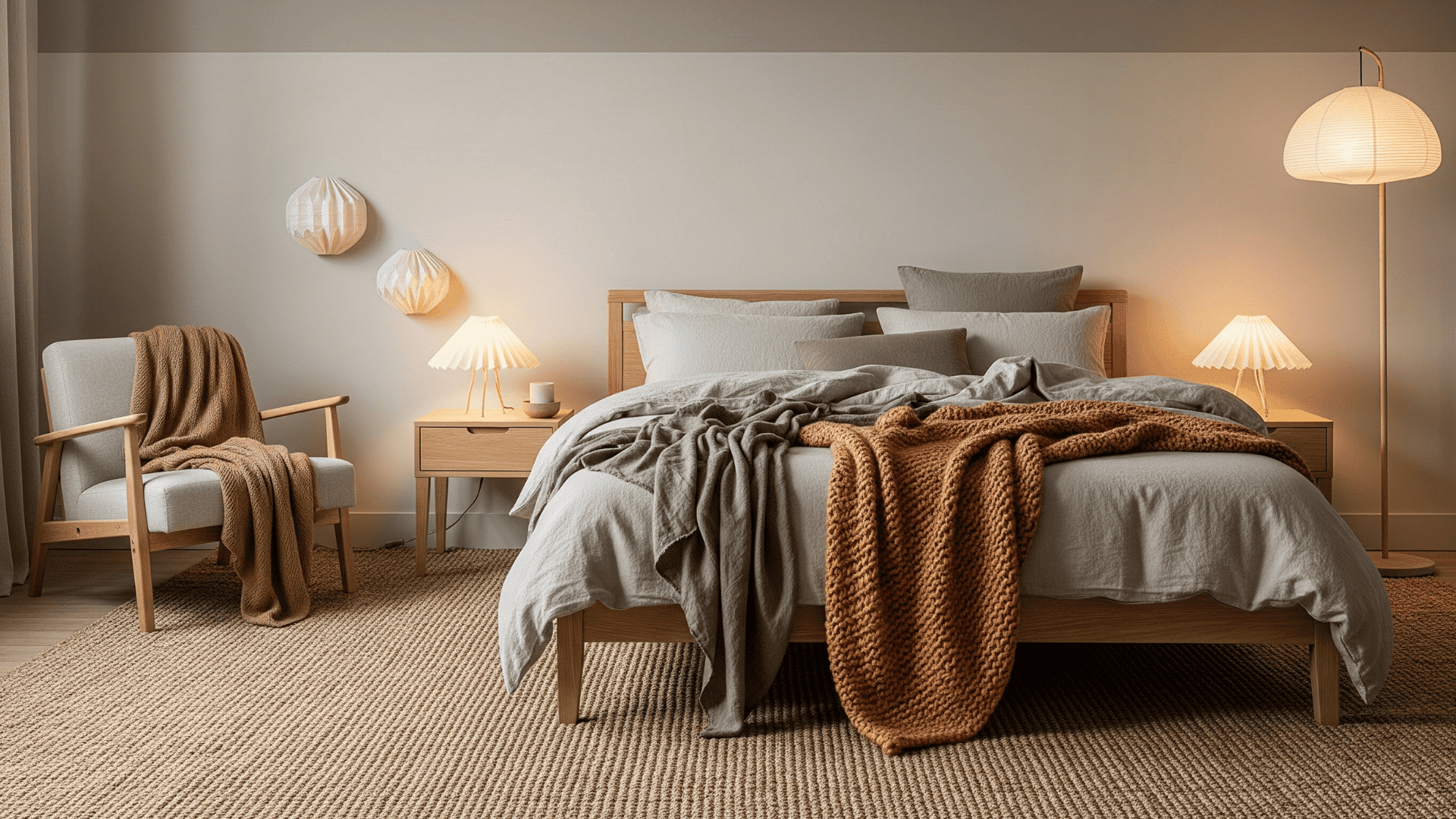
Layer soft beiges and greiges across walls, bedding, and textiles to create a soothing, warm environment perfect for rest.
Adding throws or pillows in clay or olive green provides gentle pops of muted color that evoke natural elements without overwhelming the calm.
Opt for wood furniture and flooring in low-contrast tones that blend seamlessly into the space, avoiding harsh differences to maintain a peaceful and cohesive look.
- Paint Brands to Try:Behr’s “Natural Linen” or Benjamin Moore’s “Edgecomb Gray” for calming beige and greige hues
- Collections to Consider:Sherwin-Williams’ “Emerald Interior Acrylic Latex” for luxurious, soft-matte walls
Starter Palettes
To help you begin your Japandi journey, here are three balanced starter palettes. Each combines core neutrals with subtle accent colors for calm, inviting spaces.
The hex values are provided as editorial examples for easy reference and testing.
| PALETTE | NEUTRAL BASE COLORS | WOOD TONES | ACCENT COLORS |
|---|---|---|---|
| Soft Minimal | Warm White #F6F3EE, Greige #CFC9BD | Oak #C9A57E | Charcoal #333333, Sage #9CA49A |
| Warm Earth | Cream #F4EFE7, Beige #D8C3A5 | Walnut #7D5A43 | Soft Black #1E1E1E, Clay #C57A63 |
| Cool Calm | Chalk #F7F7F5, Mist Gray #D9DAD7 | Ash Wood #BFA786 | Graphite #2B2B2B, Olive #6F7B64 |
These curated palettes give your interiors that signature Japandi balance of warmth, simplicity, and nature-inspired calm. Feel free to use them as a practical guide to style your home confidently.
Common Mistakes (And Easy Fixes)
Japandi’s calming effect can be disrupted by simple pitfalls. Avoid these to keep your space balanced and peaceful.
- Use Too Many Colors: Reduce to 3–5 hues and add texture instead.
- No Contrast: Introduce a single black or charcoal anchor for depth.
- Plants Too Bright: Choose dusty, muted greens to stay on-theme.
- Overdecorating: Keep decor minimal to maintain calm and clarity.
- Ignoring Natural Materials: Adopt wood, stone, and natural fabrics for warmth.
By steering clear of these mistakes, your Japandi space will feel effortlessly serene and well put together.
Wrapping It Up
Japandi style offers a thoughtful way to create a home that feels both peaceful and purposeful.
By blending natural tones, simple forms, and carefully chosen accents, you can design spaces that encourage calm and clarity.
The key is focusing on quality over quantity, selecting a limited palette, adding texture, and balancing light with dark elements.
Whether refreshing a single room or starting fresh, Japandi promotes mindful living through design. This approach helps build an environment that supports relaxation, connection to nature, and timeless style for years to come.

